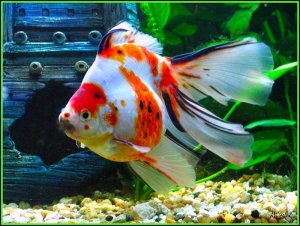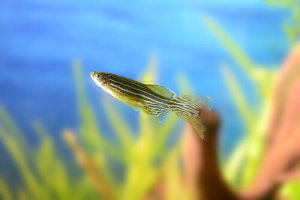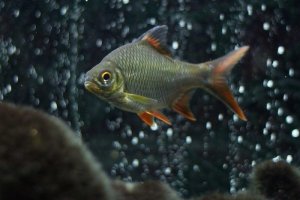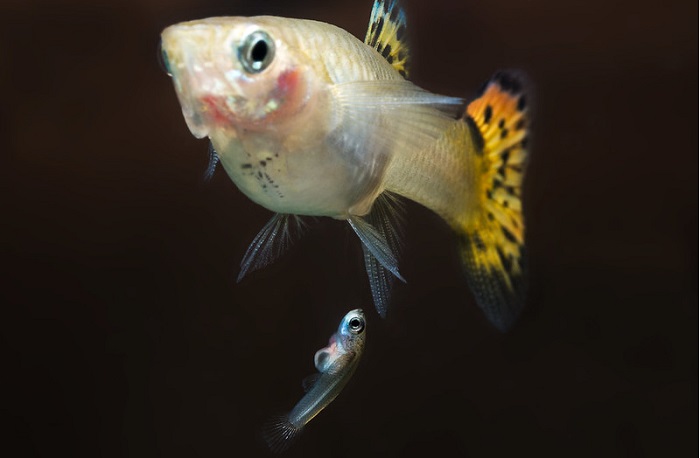
Guppies are friendly, social, and active fish that have earned their way to the top as one of the most favored tropical freshwater fish in the world. Favored by many aquarists and so easy to keep for beginners, they are versatile, and hardy fish. Another aspect that makes guppies so popular is the many color strains, variations, patterns, and even tail shapes that you can get.
In this case, many individuals breed with certain colors and variations of guppies to get even more diverse colors and strains. Other than that, Guppies are keen breeders, and you are sure to find a few surviving fry every now and again in any tank where males and females are kept together. But before we get into breeding, let’s do a quick overview of guppies as a species;
Breed Overview
| Origin | South America. |
| Lifespan | 1-3 years, 5-year maximum. |
| Size | Males 1.5– 3.5cm (0.6 – 1.4 Inches), Females 3–6 cm (1.2–2.4 Inches). |
| Colors | Albino, White, Black, Blue, Red, Yellow, Orange, Golden, Green, Bronze, Purple. |
| Food | Omnivore |
| Tank Size | 10 – 20 Gallons. |
| Temperament | Active, Peaceful, Shoaling, Friendly. |
| Water Type | Freshwater and Saltwater. |
| Water Temperature | 78–82°F (25.5–27.8°C). |
| Water pH | 5 – 8.5 Brackish Water. |
| Difficulty Level | Beginner, Easy. |
Species Information
Guppies are freshwater tropical fish, native to South America, and found all over the world today. They are Live Bearing fish that give birth to their babies and do not lay eggs, unfortunately, they are also not good parents and tend to eat their young after birth. Guppies are mostly omnivores feeding on meat and plant-based foods.
They are known to be friendly shoaling fish with a peaceful nature, that are easy to keep and very hardy. They prefer colder water conditions with more Brackish water and can survive in a marine tank, though it is not advised.
Guppies are small fish around 1.5– 3.5cm (0.6 – 1.4 Inches for males), and 3–6 cm (1.2–2.4 Inches) for females. They have a lifespan of 1-3 years, and 5 years maximum, and will get along well with other smaller peaceful fish.
Caring For Guppies In General
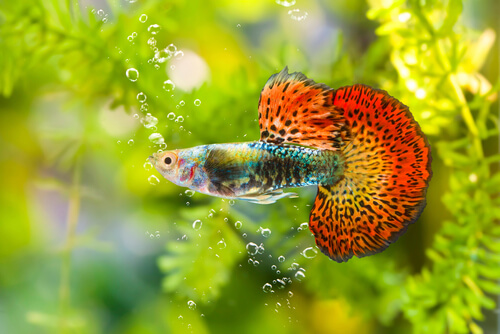
Caring for guppies is relatively easy and entertaining, they are active and social providing many hours of theatrics and enthusiastic swimming. I will touch on the care basics of Guppies, before we move on to breeding and birthing, though you can follow any of our “Guppy Care Guides” for more information.
- Tank Set-Up – Guppies need a tank of 10- 20 gallons for a group of three or a pair of guppies, and 5 gallons extra per guppy or small companion fish. Guppies require water temperatures around 78–82°F (25.5–27.8°C), and pH levels of around 6.5 – 8.5, which is slightly brackish, so you will need to add a tablespoon of salt per 5 gallons. Guppies enjoy entertaining tank décor and plenty of hiding spaces, as well as an area for swimming. They do well with most live plants, and hanging plants and moss will serve as hiding spaces for small fry. Gravel, crushed coral, and aqua soil make the best substrate to use.
- Adding New Fish – You will need to acclimate your new fish by letting them float in the tank in their bag for around 20 minutes. Then you can replace the water from the bag a cup at a time, with water from the tank at intervals of every 15 minutes for another 30 minutes, before introducing your new fish to the tank.
- Tank Mates – Guppies will get along peacefully, especially shoaling fish that are similar in size and smaller shrimp species. Smaller Pleco and Corydora catfish species are ideal, and help to keep the tank clean. Other smaller breeds you can keep with guppies are; Rasbora, Tetras, Mollys, peacock Gudgeons, White Cloud Minnows, and Endler’s Livebearers.
- Feeding – Guppies should be fed a varied diet of flakes and granules, meat-based foods, and vegetables. You can feed Bloodworms, Brine shrimp, and insect larvae as a protein, and include green leafy vegetables that have been blanched as plant matter, along with algae, or algae wafers.
- Health Issues – Guppies are hardy fish that seldomly get sick, though they may be prone to the following common conditions; White Spot Disease/Ich, Fin And Tail Rot, Swim Bladder Disorder / Dropsy, Columnaris & Mouth Fungus, and Gill Flukes. Though if they are fed a balanced diet, and have healthy water conditions they should be in peak conditions. A good idea is to quarantine new plants or fish before adding them to the communal tank, as they may carry parasites and diseases. “Guppy Behavior Before Death” is an outstanding source to follow for information on pests and diseases in guppies.
Tank Maintenance
To keep your tank well maintained you will need to do some maintenance. Make sure to remove dead plant matter, and to keep the tank décor clean. A water replacement will similarly need to be done weekly, removing at least 25% of the tank water from the bottom, and replacing it with new conditioned and properly heated water. You can follow the step-by-step methods on Wikipedia.
Breeding Guppies
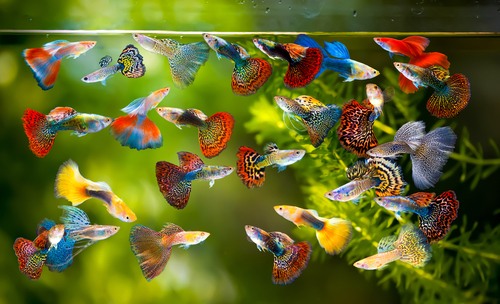
Guppies are Live bearing fish that give birth to their babies, rather than laying eggs. In the mating system, they are polyandry fish which means that one female will mate with several males in a single mating season. As recommended by our care guide you will note that we recommend at least two to three females per guppy male to give the females a break from being chased by the males.
However, before we get into the guppy birthing process, I just want to go over Mating and Breeding Guppies in general shortly.
The Breeding Tank
First of all, if left to their own devices guppies will breed over, and over again in their communal tank, and eat most of their young. Thus, if you would like to breed your guppies and keep most of the fry alive, it is best to have a separate breeding tank for them. A 10 to 20-gallon tank will be suitable, with a heater and very gentle filter so that the baby guppies, or fry do not get sucked into the filter. Temperatures between 77-80 degrees Fahrenheit (25 to 26.66 C) should be maintained in the breeding tank.
Selecting Breeding Pairs
Firstly you will need one male for two to three females to make the process less stressful for the females. Keep in mind how many fish you want to breed, and the colors and tail shapes that you want the fry to have. Choose fish that have the same color patterns and tail shapes, if you want your fry to look the same, otherwise, you can mix and match to get different color variations and patterns.
Mating
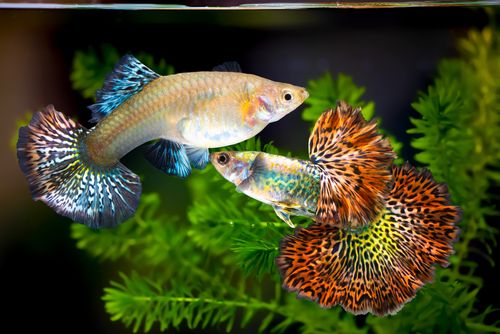
One very interesting fact about Guppy mating is that the females choice plays the most important role, ultimately she has to choose a male, depending on three factors;
- Bright Colors – Females are mostly attracted to brightly colored males, especially those that have an orange spot on the flank, as it indicates better stamina and physical fitness in the males.
- Sigmoid Display – A courtship behavior where males will dance and flex their bodies, vibrating rapidly to indicate their physical attributes.
- “Taken” Males – Female guppies may watch males courting or mating with other females, and become more attracted to these males, watching them in the act.
When the female is receptive the male will mate with her, or in some cases forced copulation may take place and sneak in quickly. Your female guppy will have a dark mark on her belly, called the Gravid Spot, which becomes significantly darker after her eggs have been inseminated.
Did you know that after insemination the female guppies can store sperm inside their ovaries, and gonoducts to continue fertilizing their ova for up to eight months, which means they can give birth without mating?
So now that we have a pregnant guppy female, we can remove the male from the breeding tank, and move on to the intricate birthing process of guppies.
Guppy Giving Birth
Guppies are very prolific live-bearing fish in which the gestation period usually takes between 25 to 35 days, though depending on environmental factors it can vary between anything from 20 to 60 days. Reproduction will take place throughout the year, and female guppies can become fertile again very fast after birth. It is recommended to keep temperatures in the breeding tank between 25 to 27 ̊ C, (77 – 81 ̊C).
The following signs will indicate Guppies Giving Birth;
- The female’s stomach will be very large and the gravid spot will become a deep black, or dark maroon in your lighter-colored guppies.
- The stomach will have a more squared-off form rather than a round form.
- The female will be still, and secluded in behavior.
- The female will also hang around the heater mostly.
- She may refuse to eat or spit out her food.
- You may notice that she starts shivering, which indicates contractions.
With contractions your Guppy will start pushing out small fry, this may take anything from 6 to 18 hours for her to give birth to all the fry. The small fry will be active and independent immediately after birth.
Once all the fry have been born it is vital to remove the female from the breeding tank, even though it may seem cruel, guppies will become cannibalistic and eat their own young. The fry will similarly be fully able to take care of themselves once born. If you cannot be present during birthing, ensure that the small fry has plenty of plants and smaller hiding places to prevent the female from getting to them in the meantime.
How To Know When A Guppy Is Finished Giving Birth
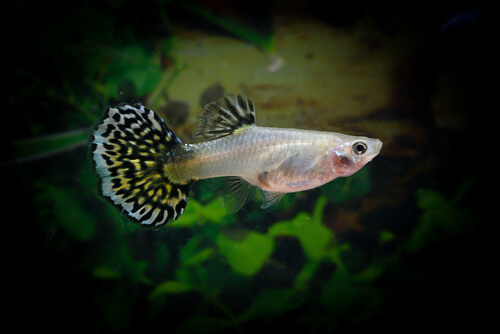
Guppies undergo contractions and relaxation when giving birth, which places excessive strain on them to the point that many females die after giving birth. That is why post-delivery care for your guppy is vital.
You can look at these telltale signs to see when your guppy has finished giving birth;
- No More Contractions – It takes around an hour to deliver a single fry and most guppies give birth to over 20 fry. When contractions stop and your guppy becomes calm with no shivering, she is done.
- The Gravid Spot is Gone – The dark Gravid spot on the belly of your female guppy will be faded and be less, merging with the rest of the colors of your fish.
- Normal Swimming – Your female guppy will be relaxed and calm, swimming more regularly, consequently she can now be safely returned to her original tank.
- Her Belly Appears Normal – The tummy will flatten more, and not have the box shape.
After returning your guppy female to her tank, you can feed her specialized foods to improve her immune system and help her to get her strength back.
Caring For The Fry
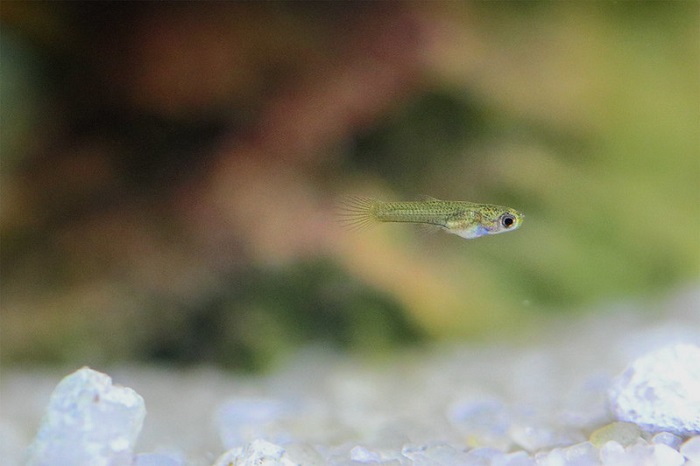
Caring for the young fry is an entertaining experience, watching them grow and mature into their full colors. You may notice after birth that the stronger, more developed fry will swim upward, while smaller, weaker fry, may drop to the bottom to gain their strength. You can follow these guidelines to care for fry:
- Keep your tank at a temperature of 78 degrees F (25.5 degrees C.).
- Do regular water changes of at least 40% of the tank when it gets dirty.
- Feed your guppy fry baby brine shrimp, micro worms, or powdered flakes that are designed for guppy fry. You can also feed vegetable flakes and meat-based, standard flakes.
- Feed your fry twice a day, and not too much as they are still quite small.
- Feed your Newborn fry brine shrimp that is recently hatched for better growth potential.
- For a treat, you can place small amounts of boiled spinach in the tank.
- Keep track of dead fry as a high amount may indicate issues with water quality, or foods that you may be feeding.
When your fry are about a month or two old, and have a decent healthy size, you can remove them from the breeding tank, and introduce them to the communal tank, as they will be able to fend for themselves.
Keep in mind that you will have to follow the procedure for adding any new fish to the tank, to acclimate them.
You can choose to keep the fry, give them as a gift to a friend or sell them to local pet stores, whichever your reason for breeding may be.
Final Thoughts
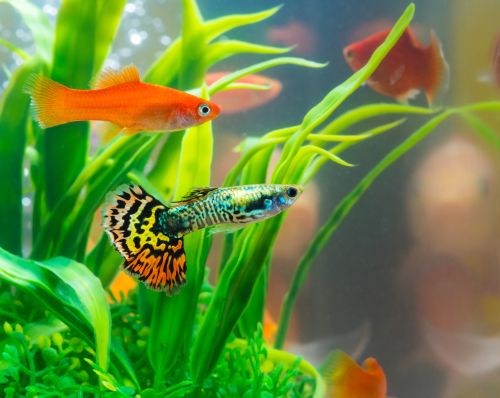
As you can see breeding guppies is a relatively easy course, provided that you have a suitable breeding tank and breeding pairs. Your guppies will breed in their initial tank if there are males and females, eventually, and regularly however the fry may not be well protected, and the water temperatures may be slightly low for young fry.
If you choose to end breeding, you should rather keep only females, keeping only males can be done but it is quite risky.


